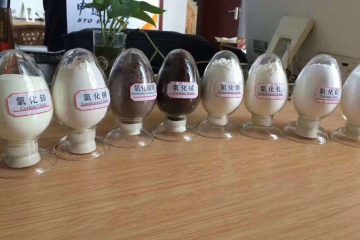Magnetic separators are the devices that are intended to eliminate contaminations and other magnetic substances from metal. A magnetic separator manufacturer will produce these separators for eliminating impurities prior to, at the time of, and subsequent to the manufacturing of a substance. You can adjust them to draw diverse kinds of magnetic substances at differing intensity levels.
A magnetic separator is also used with Alnico magnet or Smco magnet, which is one of the members of the iron alloys family. These magnets are the blend of different alloys, such as iron, aluminum, cobalt, and nickel. Usually, aluminum occupies the major part of these magnets. Some manufacturers will also include copper and titanium. The alloys in the Alnico magnets are ferromagnetic, with a great resistance to loss of magnetism loss, which is known as coercivity. They were considered the strongest kind of permanent magnets before the manufacture of rare-earth magnets.
These magnets will contain 8 to 12% of aluminum, 15 to 26% of nickel, 5 to 24% of cobalt, 6% of copper, and 1% of titanium. The remaining part of the magnet will contain iron. Magnetic separators are used for an extensive diversity of applications, although they are mostly used in the Industrial applications. Manufacturers will usually magnetize Alnico alloys to create a powerful magnetic field to have a high level of coercivity to produce sturdy permanent magnets. Alnico magnets are capable of producing a high magnetic field at their poles up to 0.15 teslas or 1500 gausses. Some manufacturers will produce isotropic Alnico magnets to magnetize the alloys in any direction in an efficient way.
Magnetic separators will usually be paramagnetic or ferromagnetic and they have different sizes, ranging from a tabletop size to the size of a big drum, which is mostly used in reprocessing and other industrialized applications. They will consist of a potent magnet that is set down or hanged from a device or ceiling. Substances are allowed to pass above a tabletop magnetic separator whereas suspended versions will often hang over a substance to remove its impurities. The material that these magnetic devices purify can be in the form of a finished product, parts, or even fluid metal.
Although the applications of magnetic separators are limitless, they are mostly used for industrial reasons, like manufacturing and reprocessing. They are used in scientific labs, as well, owing to their impurity elimination feature. In these laboratories, these devices are used in the form of a flask or cylinder to put off cross-contamination between two dissimilar substances by forcing either some or all of the magnetic substances from one material into an individual container.
There are many notable benefits of using magnetic separators. They are habitually portable and powerful. They can be easily adjusted to get rid of varying kinds of magnetic substances from a solid or liquid. These devices are most helpful when they are used on a fluid, although the elimination of solid contamination is possible, as well. Above all, they are quite adaptable, flexible, and extremely simple in their design. Actually, a standard magnetic separator can be constructed at any time, by making use of a powerful magnet and a fastener to hold the substance down.



0 Comments